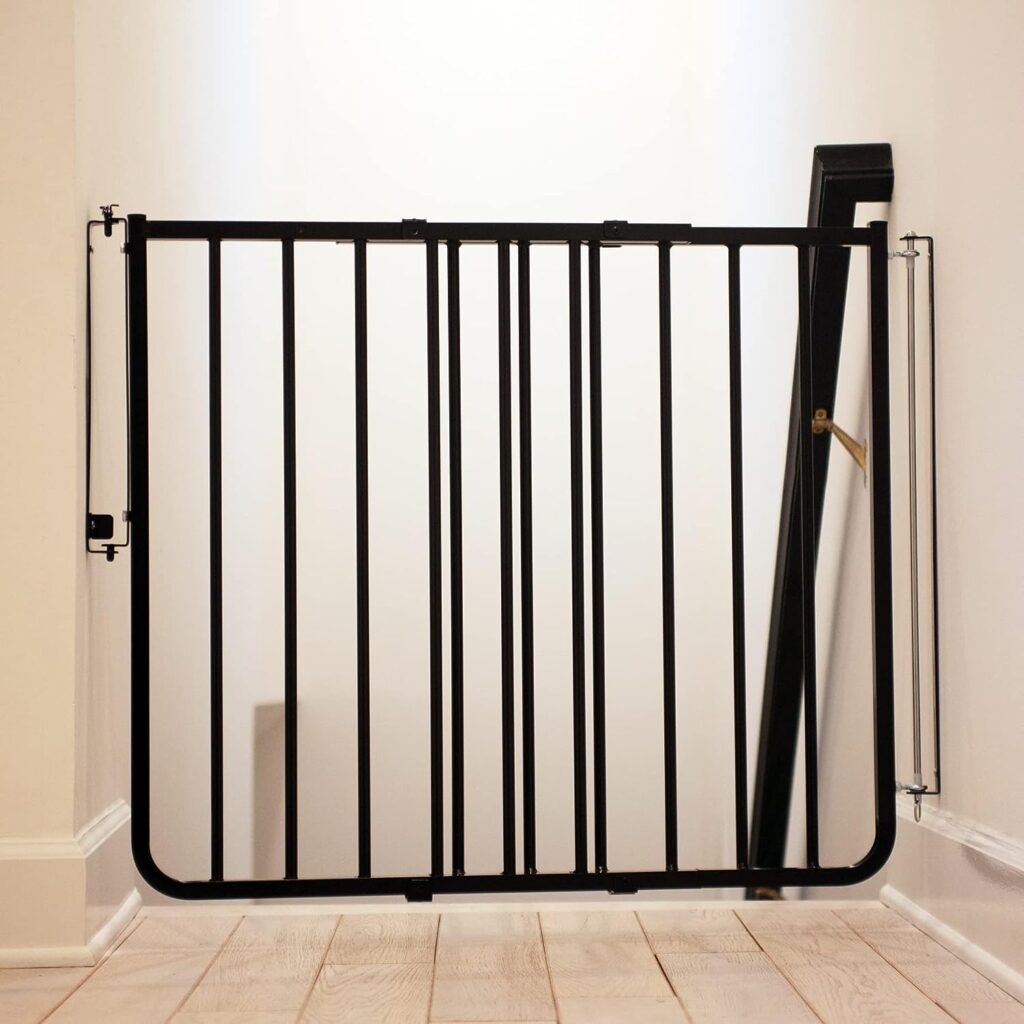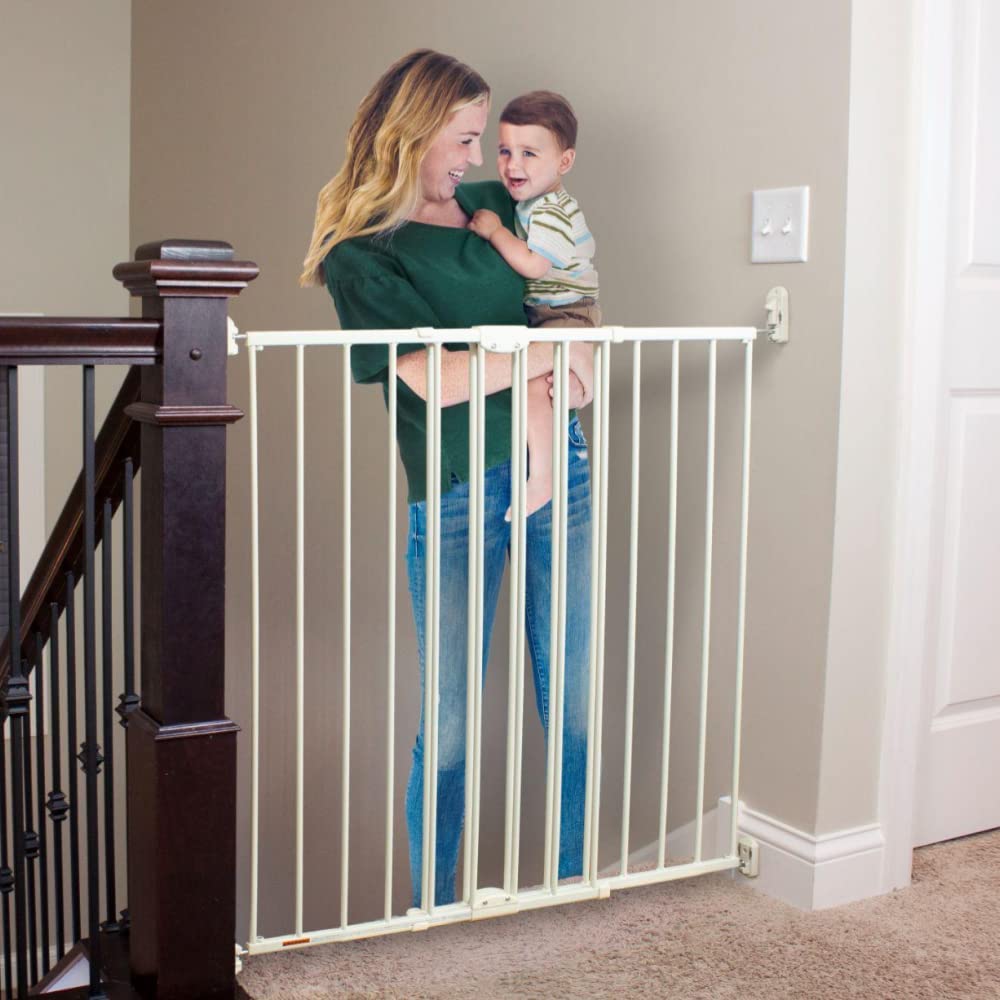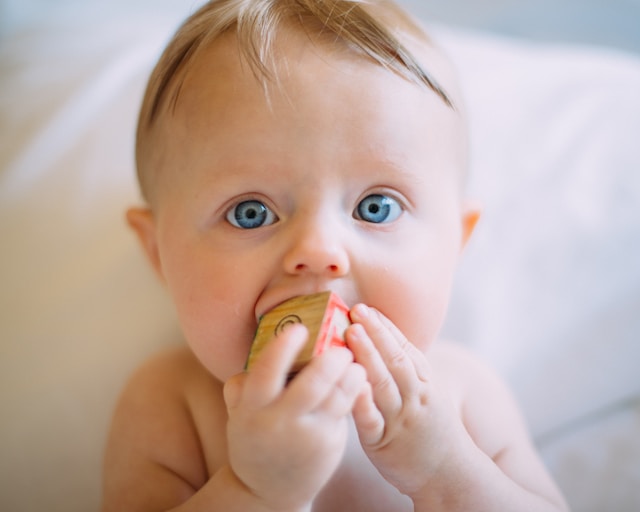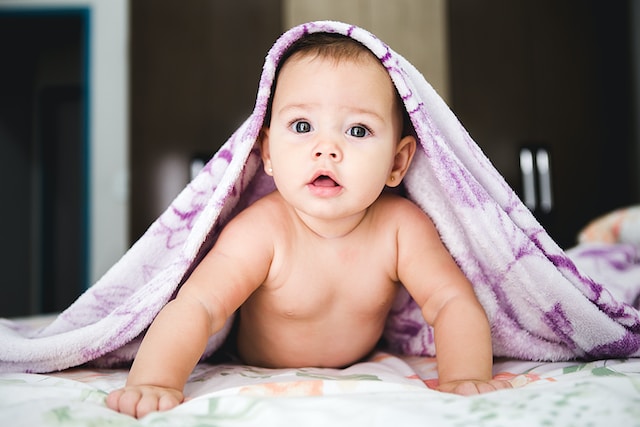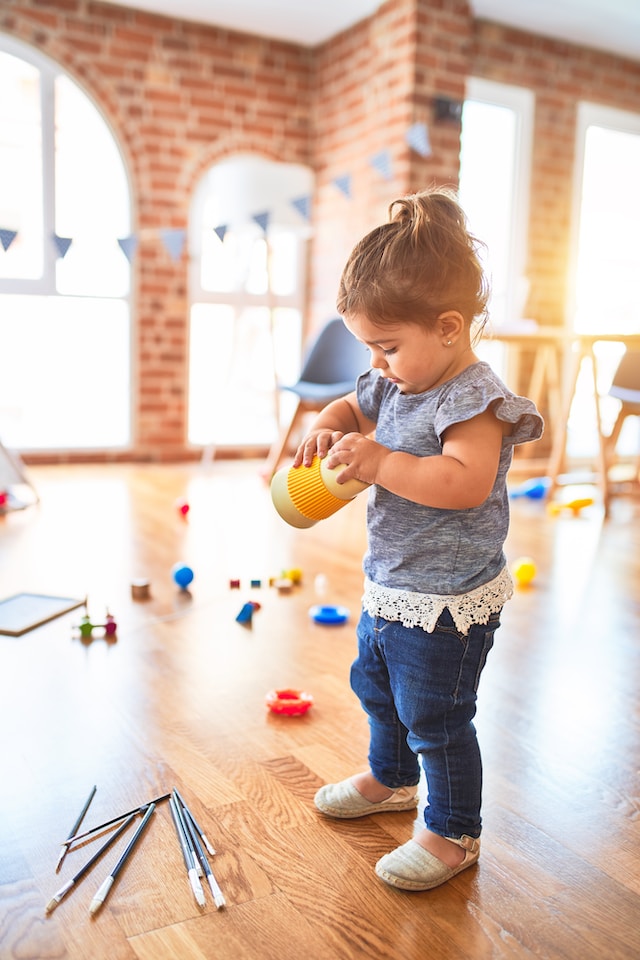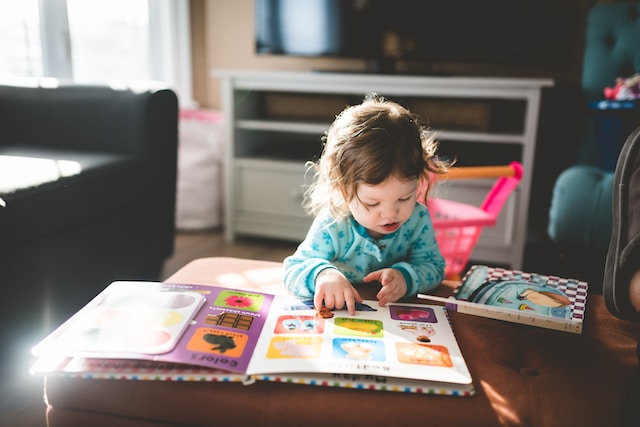According to the CDC, over 7,000 children between the ages of 0-19 died in 2019 due to accidental injuries. What makes this data even more tragic is that, more often than not, the accidental death of a young child or infant is entirely preventable.
Drowning was the number one cause of death for children ages 1-4, and children under 1 were one of the highest groups of accidental death. Every parent believes it can’t happen to them, but the reality is it happens way too often; nearly seventy children die each day in the U.S. due to accidents.
As a parent, you may be wondering, “What can I do?” Unfortunately, it is impossible to prevent every accident, and our children cannot live in a bubble, but we can take measures to improve the safety of our homes.
This article will break down the most common injuries and accidents, tips on safeguarding against different types of accidents, and suggest the necessary supplies.
So if you are an expecting, new, or established parent who hasn’t checked on their child-proofing in a while, read on to discover the top tips and tricks to make your home safe for your little one.
Baby-proofing is Smart
Baby-proofing your home is a smart and practical decision. Children under four are the most likely to become accidentally injured in the home than elsewhere. Young children are curious by nature and often learn about their world by exploring and putting things in their mouths.
In addition to drowning, choking and poisoning are other leading causes of death among young children. When was the last time you checked the locks on your medicine and cleaning cabinets? Do you keep all small items out of reach of your child? If you cannot put locks on cabinets because you rent or, for other reasons, have you put up baby gates to prevent your child from coming into rooms, you don’t want them entering?
When possible, put all choking and poisoning dangers up high out of reach from your child so that even if they get into the cabinets, there is nothing harmful they can get into.
You may think it won’t happen to you, but there is no harm in baby-proofing your home as an added layer of protection.
You Can’t Predict Everything
Supervision is the best defense against accidents and injury, but you simply cannot predict everything. The unexpected doorbell or distraction is all it sometimes takes for a child to wander off and place themselves in danger.
As your child grows, it is essential to remember how quickly they gain new skills. Planning ahead for future milestones is the best way to prevent injuries. Each new level of development presents new dangers.
Get down on your child’s level and look at a room from their perspective. What can they see and what looks tempting to touch or grab? Are there any loose cords, small objects, or heavy items they could pull down on themselves? As your child begins to pull themself up to walk, reassess each room from their new height.
Another important safety tip is to keep a clean and hygienic home. An infant’s immune system is not fully developed, and although mothers who breastfeed provide additional immunity, infants and young children are more prone to infection.
Everyone that holds or touches the baby should wash their hands first, and anyone that is sick should not be allowed to visit.
When to wash hands:
- Upon returning home or playing outside
- Before and after eating
- Before and after preparing food
- Before and after changing a diaper
- After using the toilet
- After coughing or sneezing into your hands or using a tissue
You think you may be able to predict many of the possible dangers, but keep in mind, all children will have accidents and become injured. The key is to stay vigilant to prevent severe injuries and possibly death.
Babies are Curious by Nature
Babies are naturally curious from the moment they are born. As they grow and develop, new risks arise. Never keep anything within your baby’s reach, which could cause them injury, such as cords, wires, loose buttons, paperclips, hot beverages, heavy objects, candles, etc.
As they get more mobile — rolling, crawling, walking — you have even more dangers to watch out for; always scan a room before placing them down on the floor to ensure there are no dangers.
Never leave a baby unattended on a changing table, even if you don’t think they can roll yet. If you walk away, your baby may begin to look for you and attempt to move around. A fall from a changing table is enough to severely injure or even cause death to an infant.
Children Will Get Hurt
It is impossible to rid your home of dangers completely, but you can lower the risk of your child getting hurt by making simple changes and making sure they are constantly supervised. When you cannot directly supervise them, such as a trip to the bathroom or while cooking dinner, place them in a safe and secure place such as a playpen or their crib.
Another safety tip is to make sure someone is watching closely when younger children interact with the baby. Keep household pets at a distance until you know how they will interact with your baby, and never leave your child unattended with a pet.
You can prevent falls by never leaving your child unattended on a bed, couch, or changing table and by placing baby gates at the top and bottom of all stairs.
Post all emergency numbers near the phone or have them saved in your cell phone, such as poisons control and your child’s pediatrician.
Poison Control 1-800-222-1222
Lastly, consider enrolling in child and infant CPR/First Aid class. Many libraries and local recreation centers host classes on a regular basis.
No Sense of Danger
Because your little one has an innate curiosity but not the situational awareness to avoid danger, you need to make your home as safe as possible. The best way to do this is to get down on your baby’s level and survey their surroundings.
It may feel a little silly, but laying on the floor or crawling around on your hands and knees will help you see potential dangers that may be easy to overlook from an adult’s perspective. For example, you have likely already thought of putting plugs in electrical outlets or moving fragile items up high. But getting a child’s eye view will help you see things like tablecloths hanging within your crawler’s reach or sharp corners on furniture.
Make sure you explore your home from your baby’s perspective with their curiosity in mind! You’ll likely be surprised by all the temptations you see from their eye level.
Sensory Exploration
Babies and young children learn best through sensory exploration, which often means putting everything in their mouths. This practice is called “mouthing,” and it is a normal part of child development. However, most children outgrow mouthing by three years old. Due to this instinct, you should assume that anything a baby can grab will go into their mouth!
Putting things in their mouth could make your baby sick, so wash and disinfect their toys regularly. Unless an object is unsafe, do not prevent your child from mouthing toys; simply wait until they are finished to pick the toy up and wash it.
Many dishwashers have a sanitation cycle you can use, or you can wash toys in warm soapy water and allow them to air dry or, better yet, dry in the sun. Sunlight is a known bacteria killer.
In addition to getting sick from baby mouthing, choking is also a hazard, so regularly inspect toys for loose or broken parts which could harm your baby.
Accidents Will Still Happen
No matter how much you prepare for baby safety, accidents may still happen. For example, you could trip over the cat who comes running through the room, or your baby may fall and get a bump. So expect accidents to happen, and calmly comfort your child when they do.
However, the more safety precautions you have in place and practice regularly, the less likely your child will experience a severe injury.
Common Child Injuries:
- Falls
- Impacts
- Car Accidents
- Punctures
- Bites or Stings
- Foreign Body Injury
- Burns
Falls
Falls can occur in a variety of situations. However, some of the most common causes of falls include stairs, beds, windows, bathtubs, cluttered pathways, and playgrounds.
Ways to Prevent Falls:
- Clean up spilled liquids immediately
- Secure all carpets
- Install baby gates
- Keep windows locked
- Use a non-slip bathmat
- Clean up toys when finished playing
- Supervise young children on climbing equipment
Bumps & Bruises
Impact injuries can happen at any time. For example, babies can be injured by being pinned under a tipped-over piece of furniture. Another child’s toy or ball can hit them, and they can crawl or walk into a wall, door, or piece of furniture.
Ways to Prevent Bumps & Bruises:
- Open doors slowly and look before you open them fully to ensure your child is not sitting behind them.
- Use caution when playing catch and use age-appropriate toys.
- Use safety bumpers on the corners of tables and mantles.
- Secure all heavy furniture and televisions to the wall using furniture straps
Car Accidents
Millions of car accidents occur each year, and they are a potential source of injury for your child. In 2019, the CDC reported that 608 children under the age of 12 died in a car crash.
Even if you are a safe driver, you cannot guarantee other divers’ safe habits. The best way to protect your child is to ensure they are correctly secured in a car seat. Unfortunately, many children are in the wrong size or type of seat for their age. Roughly 40% of the children ages 4-12 who died in crashes in 2019 were not using car seats or restraints.
Children under the age of two should be rear-facing in the back seat. Children under the age of 12 should not be allowed in the front seat of a vehicle. Most children will need a booster seat until at least the age of 9.
Check out the CDC’s resources section and read Top 15 Safety Tips for Car Seats for additional tips on car seat safety.
Punctures & Lacerations
Puncture wounds happen when the skin is pierced or cut with something sharp. Punctures most commonly occur due to falls on sticks or other items in the yard. Kitchen cutlery can also cause punctures or cuts.
Ways to Prevent Punctures & Lacerations:
- Keep all sharp objects away from children, including scissors and knives
- Do not allow children to run with sticks
- Check your yard for any debris that may cut or puncture your child if they fall.
Bites & Stings
One of the most common reasons for children aged 0-9 to visit the ER is treating a sting or bite. Bites or stings can happen everywhere at any time. Household pets can bite, insects such as spiders, bees, and ants are also potential dangers.
Ways to Prevent Bites & Stings:
- Caution your child about bee stings and that they should never aggravate them if they see them
- Survey your house and yard for bee or wasp nests
- Use a home perimeter bug spray to keep insects out of the home
- Teach your child how to respect animals and pets and that they should never pet a dog without asking the owner first
Foreign Body Injury
Many children will experience a foreign body during their childhood years. A foreign body is anything that doesn’t belong in the body. For example, a marble stuck in the nose or a splinter in their finger. Between the ages of 1 and 4, foreign objects in the body are one of the primary reasons children visit the ER.
Ways to Prevent Foreign Body Injuries:
- Teach your child never to place anything in their ears, nose, eyes, or mouth unless it is food (young children will mouth objects, so be sure their toys are safe)
Burns
A child’s curiosity often causes burns — grabbing a hot pan or cup of coffee. Additionally, cleaning supplies can cause chemical burns, sticking fingers into outlets can cause electrical burns, and playing outside without sunscreen can cause sunburns.
Ways to Prevent Burns:
- Never drink hot liquids when holding your baby, and never leave a hot beverage unattended within their reach.
- Always looks behind you before you open the oven.
- Teach your child what hot is and that it can hurt them
- Place a fire gate if you have a fireplace.
- Keep all cleaning supplies out of reach and in locked cabinets.
- Wear sunscreen when outside. Sunburn can still happen in the fall or winter, so apply it to exposed skin if you are outside for a lengthy time.
The Parental Role
To ensure your baby is safe within your home, start with the basics:
- Put safety gates to block all stairways and to block any rooms that are “off-limits.”
- Ensure that any plants in the home are non-toxic
- Put locks on outside doors
- Install a gate around your pool that locks and use a pool alarm
- Vacuum carpets regularly and sweep floors often to get any small items that can be choking hazards
- Put locks on cabinets that contain cleaning supplies, toiletries, sharp objects, or liquor
- Cover heating vents or radiators to prevent burns
- Get rid of any removable caps on doorstops
- Check toys with batteries regularly to prevent acid leaks
- Check toys for broken, loose, or missing parts
- Secure all heavy furniture & appliances
- Talk to your child regularly about safety
Supervision At All Times
No matter how baby-proofed you make your home, supervision by sight and sound is still the best way to prevent injuries. You can prevent many accidents by watching your baby closely. But, some accidents happen so quickly that even stepping away for a moment is potentially a risk.
It is probably impossible to provide constant supervision, especially if you are home alone all day with the baby. However, you can use monitors to help you keep an eye on your little one.
If you need to step away, you can put the baby in a playpen or their crib.
Hiring a Sitter
Hiring a babysitter can be difficult for some parents because it can be hard to trust a stranger with your little one. Listen to your instincts when you are interviewing your babysitter; if they make you uncomfortable for any reason, don’t hire them.
Ask your potential sitter for references and if they are CPR certified.
Set up a potential playdate for sitter candidates so they can meet you and your children while you supervise.
Preparing for Safety is The Best Insurance
Preparation is the best insurance when it comes to your baby’s safety. So remember to start long before you even bring the baby home from the hospital. Knowing that you have set up a safe space for your little one to thrive will give you the peace of mind to relax and focus on being a new parent.
Time to Get Started
You now understand the importance of baby-proofing your home and how to look out for other potential dangers and risks, so now it’s time to get started! Use this article as your guide on setting up a safe and low-risk home for your family.

